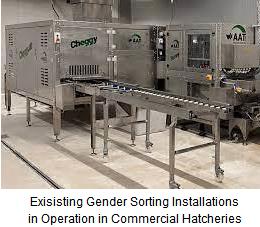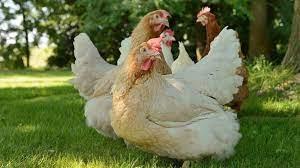 A project is in progress in Germany to develop a dual-purpose chicken. The objective is to eliminate killing day-old cockerel chicks from egg production strains with the intention of rearing them as meat-producing birds.
A project is in progress in Germany to develop a dual-purpose chicken. The objective is to eliminate killing day-old cockerel chicks from egg production strains with the intention of rearing them as meat-producing birds.
This exercise in futility runs against commercial realities. Meat-type chicken hybrid strains and their counterparts for egg production have been subjected to at least six decades of selection for commercial traits and the divergence is evident in growth rate and conformation in the case of broilers and egg production and feed conversion efficiency for laying strains.
To reverse decades of selection in pursuit of a narrow goal of eliminating the disposal of commercial-level cockerel chicks in laying strains runs counter to sustainability and economics. Producing a dual-purpose chicken for industrialized nations is as logical as an automobile that can fly. Inventers have developed dual-purpose vehicles but they do not fly very well nor do they provide comfort, convenience and speed as road vehicles. This is evidenced by the lack of commercial acceptance and the fact that if any of these dual-purpose vehicles currently exist, they are in barns or in museums as oddities. The development of flying cars was more a function of “can it be done” than “need it be done”.
 The dual-purpose chicken project is based on the English Ixworth strain but the three German universities involved are introducing genes from current broilers and egg production lines to create the RegoHuhn.
The dual-purpose chicken project is based on the English Ixworth strain but the three German universities involved are introducing genes from current broilers and egg production lines to create the RegoHuhn.
Apparently, those involved, including the German Ministry of Food and Agriculture, are apparently unaware of the existence of commercial gender determination systems that will become more precise and achieve greater acceptability over the next five years. These systems depend on assay of reproductive hormones from a sample of allantoic fluid extracted from an egg and can be regarded as bridging technology to satisfy current retail demand.
Subsequently, depending on consumer acceptance, more advanced technology involving an optogenetic system should (or may) be adopted. This elegant approach requires genetic modification of the female parental Z chromosome but may be unacceptable to primary breeders or to the Birkenstock clan who agitated against the disposal of cockerels in the first instance.
In the interim, it appears that a number of geneticists and poultry scientists at E.U. institutions consider themselves meaningfully employed. They are attempting to produce a strain that will not be commercially viable for other than a limited number of small-scale farmers who can obtain a premium based on sentiment, but at a price that will be unacceptable to major retail chains. Developing a dual-purpose strain, for the edification of those involved is analogous in the context of Germany to creating a Zeppelin that can achieve supersonic speeds
These scientists would be more meaningfully employed if they applied their knowledge and used their facilities to improve the productivity and welfare of commercial hens in aviary systems. The egg-production industry is currently attempting to optimize egg production, livability and shell quality from hens that have been bred for over fifty generations in cages and require adaptation to aviaries, barns and pasture.